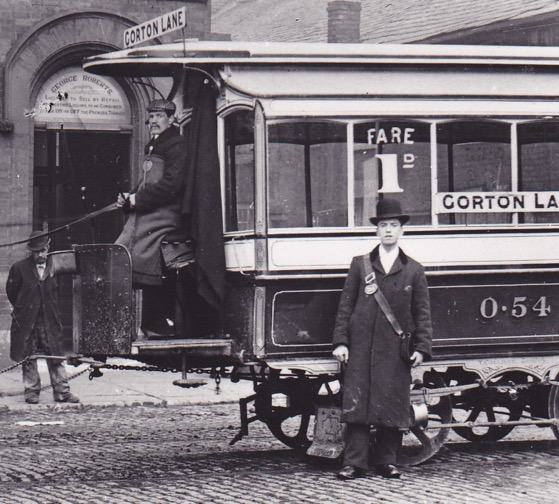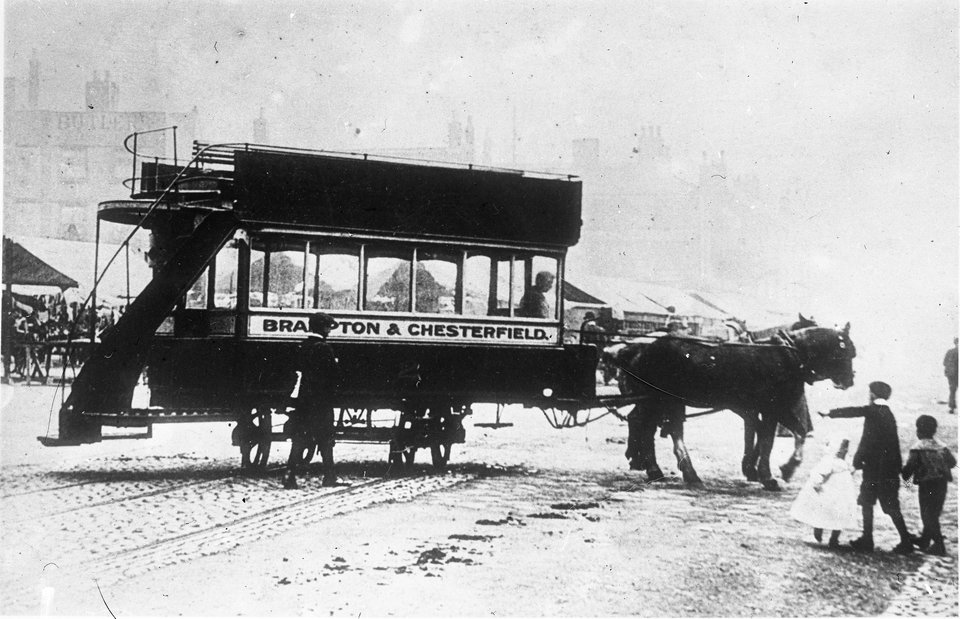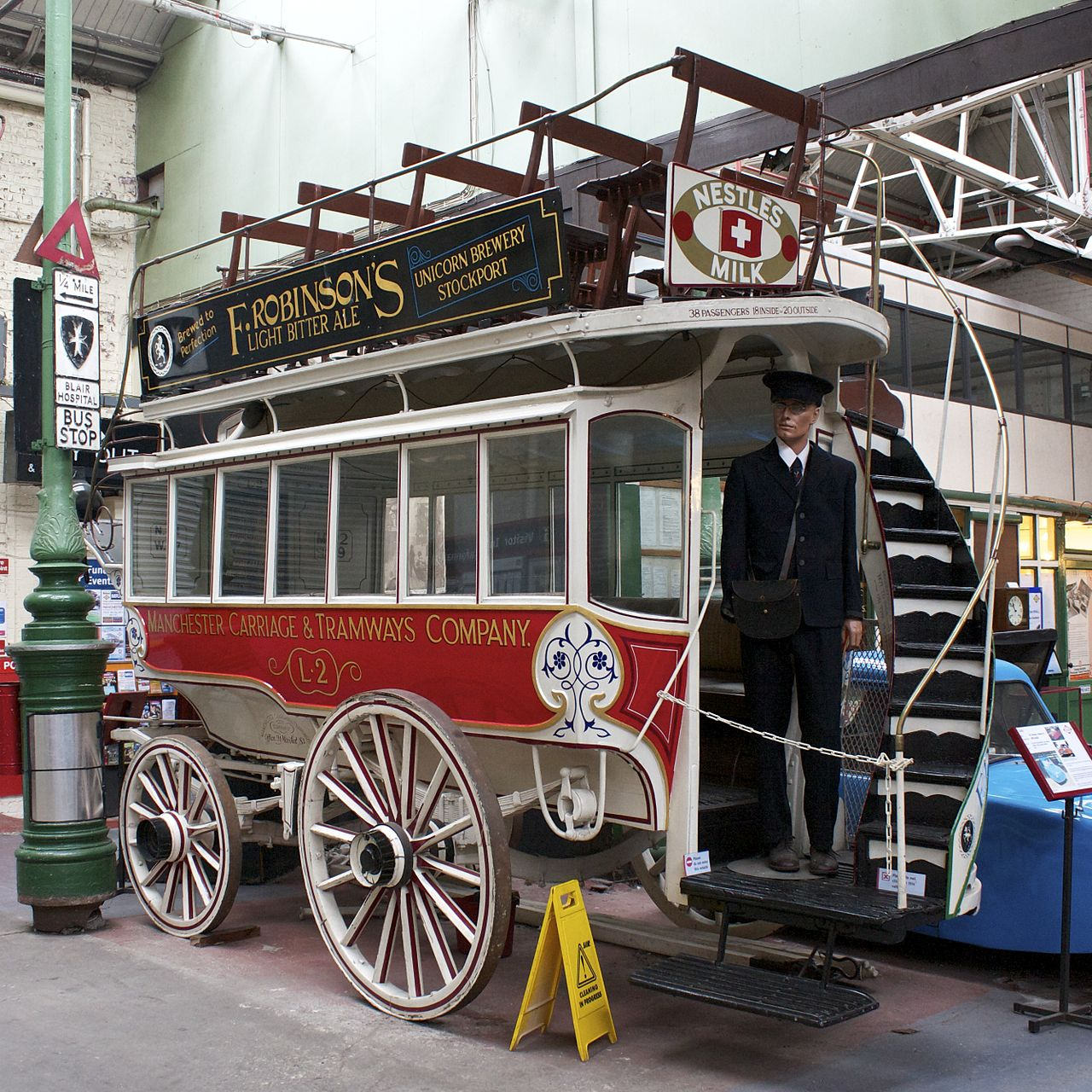Innovations drive the world and contribute to the rapid development of cities. 19th-century Manchester didn’t miss this tendency as well. In particular, a horse-drawn carriage, also known as an omnibus, was a revolutionary and innovative solution at that time. It became the forerunner of the city’s modern urban transport system. In the 19th century, Manchester became one of the first cities in England to introduce this innovation into its urban life. Learn more at manchester-future.
The appearance of a horse-drawn tram in Manchester

Like many other grand projects related to transport infrastructure, omnibuses appeared in Manchester at the beginning of the 19th century, the era of the industrial revolution. In particular, the history of the horse-drawn trams in Manchester goes back to 1824. According to historians, in that year, the first omnibus service appeared in the city and throughout the country. They ran between Pendleton, Salford and Manchester. At the beginning of the 19th century, that type of transport became a huge success, which contributed to the opening of new omnibus companies.
The first horse-drawn trams were wooden carriages pulled by horses. In the early 19th century, they were often used for transportation of various goods and materials. However, soon, their rising popularity and efficiency led to the creation of omnibuses for passenger transportation.
Thus, the horse-drawn tram not only became the main means of freight transportation but also transferred passengers around the city of Manchester. It became one of the most convenient modes of transportation in the city with a rapidly increasing population. Therefore, the horse tram network in Manchester had expanded significantly by the middle of the 19th century. Omnibuses ran the most popular city route and stopped at the most popular stops. The appearance of the horse-drawn trams in Manchester significantly influenced its further development. That type of transport was many times better, more comfortable, convenient and faster than previous ones, such as horse carriages.
Passengers got on and off the tram at certain stops, paying the conductors standing on the back platform. The horses often worked in pairs and drew the tram very smoothly along the tracks, ensuring a quiet and comfortable ride. Thus, the appearance of the horse-drawn carriage at the beginning of the 19th century definitely had a positive impact on the lives of Manchester residents and influenced the further development of public transport in the city.
The 19th century was marked by the rapid development of horse-driven trams in Manchester. Therefore, many horse transport companies appeared in the city at that time. It was one of the most profitable businesses back then, so competition was incredibly fierce. Each company owner fought for their passengers. In addition, Manchester’s network of tram lines developed significantly as well. Thus, the first tram line to the Manchester suburbs appeared in the 1870s.
Challenges on the way
Although the horse-drawn trams developed rapidly in 19th-century Manchester, it wasn’t an even process. In particular, narrow streets became one of the biggest challenges. They led to huge traffic jams, causing public concern about the health of the horses. At the end of the 19th century, horse-drawn trams faced the strongest competition, as alternative means of public transport began to appear in the city.

Therefore, tram companies started to introduce innovations. Some of them created double-decker trams, while others invented an entirely new steam-powered mechanism. However, despite technological development in public transport and the appearance of new, comfortable and innovative means, the horse-drawn trams continued to operate in Manchester until 1903.
By the beginning of the 20th century, the horse-drawn tram network covered more than 140 miles (225 kilometres) and involved more than 500 trams and 5,200 horses. There were also around 19 depots in the Manchester region.
Liquidation of horse-drawn trams in Manchester
Despite the fact that at the beginning of the 20th century, the horse-drawn tram network was very large and involved many trams, depots and horses, a rapid technological revolution pushed it out of Manchester’s roads forever.
The decline of the horse-drawn tram took place because of the emergence of completely new forms of public transport in Manchester, such as electric trams and motorised buses. The new public transport was many times faster, more reliable and more comfortable. In addition, they were cheaper in maintenance and there was no need to keep horses anymore. In the end, the horse-drawn trams could no longer compete with innovative transport, and in 1903, it was finally liquidated.

Although the horse-drawn trams don’t exist in Manchester anymore and they can be seen only in some of the city’s museums, their appearance marked a significant era in the development of public transport.